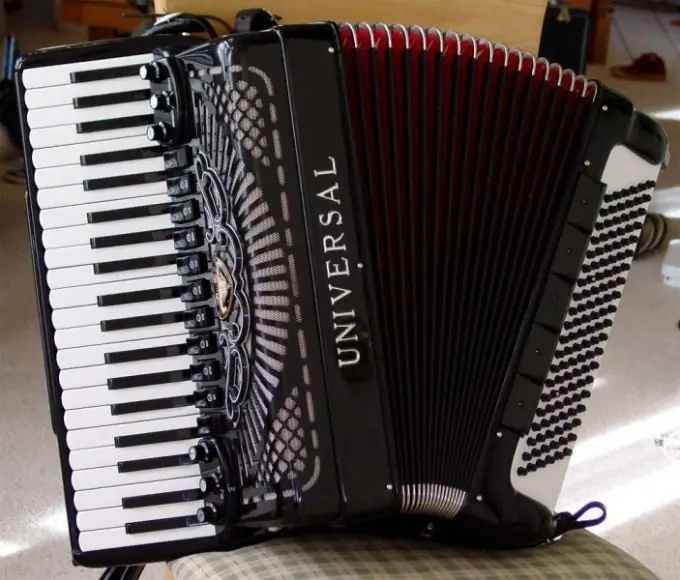The accordion is a hand-held musical instrument that is an improved accordion with a piano-type right keyboard. Playing such an instrument is not easy. And it is just as difficult to fix it in the event of a breakdown. Repairing any musical instrument requires experience, certain skills and craftsmanship. But if you wish, you can fix some simple types of faults yourself.

Necessary
- - birch plywood;
- - wood (beech, linden, alder);
- - wood glue;
- - like;
- - grinding machine;
- - sandpaper of different grain size;
- - a sharp knife;
- - chisel.
Instructions
Step 1
Rate how serious the instrument malfunction is. Breakdowns associated with breaking the furs, as a rule, require their complete replacement and are difficult to perform in a home workshop. The problems that can be eliminated with minimal carpentry skills include the repair of resonators.
Step 2
Try the tool in action. It is quite simple to establish a malfunction of the resonators by changing the sound quality of the accordion: the volume decreases, the sound of several reeds is heard at the same time, and the air consumption increases.
Step 3
To determine the exact cause of the poor sound, disassemble the accordion and check all strips and resonators. If the resonators are installed correctly, check the quality of the mounting of the strips on the resonators. If no defects are found in the installation, remove the strips and check all adhesive joints and resonator parts.
Step 4
Remove the sealing bead from the sockets. If there are gaps in the adhesive joints, peel off the rosettes and other loose parts. Use a sharp knife with a thin blade to detach parts. Using the same carpenter's knife and chisel, clean the old glue from the parts.
Step 5
Prepare new parts to fit them. It is desirable to use in this case similar wood species or similar in color and mechanical properties.
Step 6
Fasten the parts with wood glue and dry for four to six hours. Make sure the connections are tight and tight.
Step 7
Align the outer surfaces of the resonators; glue sockets on them, letting the glued parts stand for several hours.
Step 8
Sand the rosettes with sandpaper or a sander. Clean the parts from dust and inspect, paying attention to the tightness of the baffles.
Step 9
Cover the outer surfaces with varnish, applying it in an even layer, without air bubbles. Ideally, the surface should be glossy, without glue and varnish drips.
Step 10
Glue the sealing bead to the sockets, taking care not to allow gaps at the joints of the connections. The seal must be of the same thickness and ensure complete tightness.







